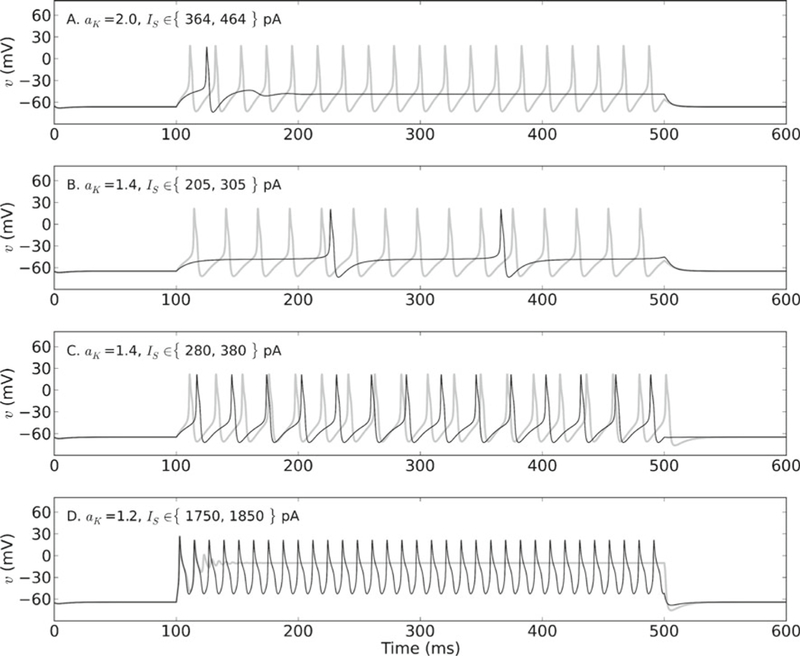Fig. 5.

Firing behaviors produced by different combinations of Shab channel expression and stimulation amplitude. (A) Stimulating the membrane just below Icyc when aK = 2.0 causes a single spike followed by a depolarization that is sustained for the duration of the current pulse (black trace). Increasing the current amplitude by 100 pA elicits relatively high-frequency repetitive spiking (gray trace). Compare these responses to those of MN5 in Fig. 1(A). (B) Stimulating at Icyc when aK = 1.4 produces low-frequency repetitive firing with a long delay to first spike (black trace). Increasing the current by 100 pA abolishes the long delay and elicits higher-frequency repetitive firing (gray trace). Compare to MN5 recordings in Fig. 1(B). (C) Stimulating with an amplitude beyond Icyc when aK = 1.4 induces repetitive firing that commences shortly after stimulus onset. Increasing the current by 100 pA decreases the already short spike latency and increases the firing frequency. Compare to MN5 responses in Fig. 1(C). (D) Stimulating with a current well beyond Icyc when aK = 1.2 produces fast-onset repetitive spiking, but APs diminish slightly in amplitude after the first spike and have a triangular shape. Increasing the current by 100 pA produces an initial spike, but subsequent oscillations decrease in amplitude until full depolarization block is reached. Compare to MN5 responses in Fig. 1(D). Parameters same as in Fig. 4
